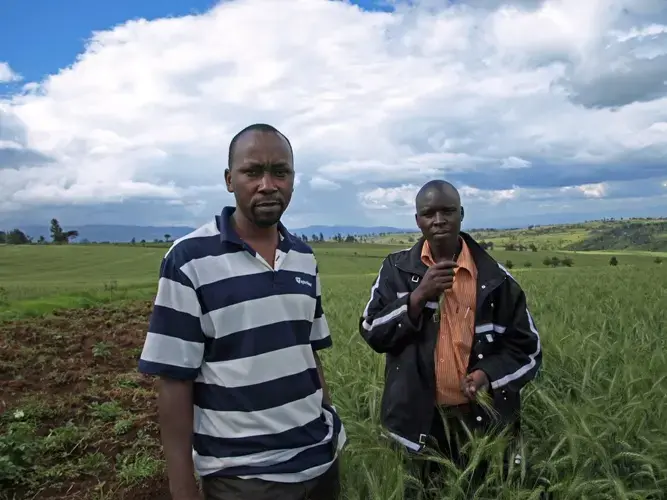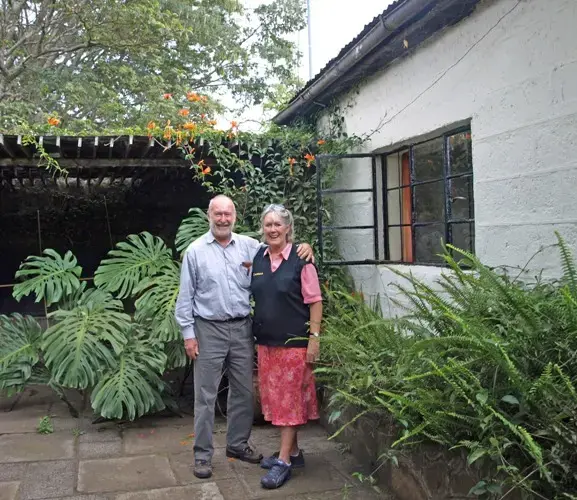On top of his losses to wheat stem rust, George Mukindia watched 30 acres of his wheat burn in the flames of Kenya's recent post-election violence.
Mukindia's fields are near Eldoret, where 30 unarmed civilians were slaughtered in a church on New Year's Day.
The violence erupted after incumbent president, Mwai Kibaki, was declared the winner of the Dec. 27th presidential election. Supporters of his opponent, Raila Odinga, alleged fraud, a claim supported by many international observers. Since Feb. 28th when Kibaki and Odinga signed a power sharing agreement, the killing and burning have subsided.
But tension lingers in Kenya's lush Rift Valley where access to the nation's most fertile farm land was one of the contentious issues building up to the violence. And the hulks of burned buildings stand as reminders of the fighting Kenyans still struggle to fathom.
I struggled too. It was hard to believe, standing in Mukindia's sun-drenched farm fields and enjoying the stunning views of the lush valley that this bucolic setting was the stage for so much bloodshed.
I am not here to cover politics. I'm chasing down the details of an outbreak of wheat stem rust which threatens crops and food supplies in poor countries across Africa, the Middle East and Asia.
But for many in the Rift Valley, the political violence intertwines with the wheat disease into an overall story of frustration and senseless loss.
Descendents of European colonists weren't targeted, said Cathie Nightingale whose family farm was founded by an ancestor in 1905. He gave up his post as captain of a sea clipper to settle in Kenya.
But the Nightingale's African farm hands fought for their lives. Women and children slept in the fields because their houses were being burned in the darkness of night, she said, and the men formed vigilante groups. Driving a tractor to rented fields nearby was unthinkable.
"So we had nearly three months of doing nothing," Nightingale said.
Burning wheat was the ultimate act of self-destruction, Juliah Ngahu fumed as she drove me from the Nairobi airport to my first hotel in the country. Despite its rich farmland, Kenya couldn't grow enough wheat to satisfy its demand even before the stem rust attack started clipping yields. More than half of the wheat that fills breadbaskets here is imported.
After the violence quieted, Mukindia did what he could to close that supply-demand gap, expanding his wheat plantings to 580 acres, up from 200 acres last year. But reddish-brown blisters marred the wheat stems. An expert from a local research station confirmed that it was the deadly stem rust disease called UG99. Mukindia paid to have the fields sprayed with fungicide. Still, his wheat looks pathetic and he expects to take a substantial loss on the crop.
Meanwhile, Mukindia's farm manager was killed last month when he missed a sharp curve while driving a tractor in fog and darkness.
The sum of it all is a wretched year for Mukindia, and he is reassessing his options in farming.
There is reason to hope the violence has ended, but the stem rust is relentless.








